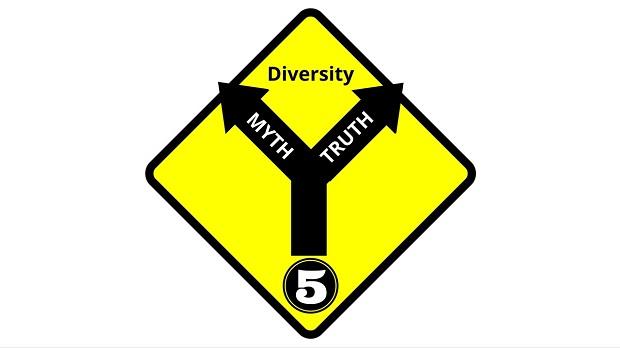
While many are familiar with the concept of the “glass ceiling,”[1] fewer have heard of the accompanying phenomenon known as the “glass cliff.”[2] The glass ceiling refers to the invisible barrier that women encounter in their attempts to climb the professional ladder. The glass cliff is especially precarious for women from historically marginalized and excluded communities — namely Black women. Often moved into roles in times of chaos or crisis, these leaders are not equipped with adequate resources, staff, training, or support. Having broken through the ceiling, they are thrust into positions teetering on the brink of failure and into organizations committed to misunderstanding them.
What Does the Glass Cliff Look Like?
If the cliff is invisible, how can we identify it? Diversity, equity, and inclusion strategist Tara Jaye Frank[3] expands on the existing definition by describing types of glass cliff assignments that racialized leaders (both men and women according to the research[4]) often experience:
- Unimportant: Company is pressured to create a role with no power, no resources, and an insufficient team; failing to make progress, they are scapegoated. For example, any number of Chief Diversity Officers finding themselves with “unimportant”[5] assignments carrying unrealistic expectations and no C-suite/executive leadership support.
- Impossible: Challenges are great, failure is expected; a lack of achievement results in steep career decline, while success reaps little reward. Think of Dr. Aysha Khoury and her necessary, though “impossible” assignment[6] to teach the next generation of physicians about racism in medicine without the support of the school’s administration.
- Controversial: Asked to lead work that is inherently difficult, counter-cultural, and comes with built-in resistance. There is high reputation risk. Consider Bozoma Saint John’s “controversial” assignment[7] to create change at Uber — an environment that continues to prove challenging for women and marginalized employees.
In effect, boards and C-suites are actively recruiting historically excluded and marginalized leaders to climb a cliff without ropes or harness.
The Challenge with Individualizing the Problem
Researcher Michelle Ryan provided an update to the ANU Global Institute for Women’s Leadership in 2022 noting,[8] ”The nuances and complexities of the glass cliff suggest that it is unlikely to have a straightforward solution. However, the fact that the glass cliff is so dependent on context suggests that change is possible. We can design interventions to reduce the likelihood that members of underrepresented groups will continue to face the glass cliff.”
The issues leaders face, particularly Black women, are not specific only to their individual role, or only to their organization, but structurally to the workplace as a whole. Basic behavioral science tells us an individual’s behavior is a function of the person and their environment.[9] The solutions we need point us to a structural inequity, rather than an individual one. Continued, rigorous, academic research will allow us to contextualize and make sense of examples. This is vital in shifting the narrative to the types of structural barriers encountered, rather than simply blaming individuals or institutions for poor outcomes.
Address the Structure to Address the Problem
I have anecdotally analyzed the DEI components in place for Black women leaders recently appointed to glass cliff assignments. Here are three suggested actions based on those examples:
- Nicole Taylor, CEO of Silicon Valley Community Foundation: Hired “in the wake of a scandal involving allegations of sexual, racial and other misconduct by top executives.”[10] A publicly available, third-party report outlines the substantiated allegations and recommendations with specific timelines and metrics.[11]
- Solution: Conduct an equity audit. An important tenet of advancing DEI is transparency and accountability, and one tool to accomplish that is an equity audit. Equity data will illuminate the extent to which equity is built into your organization’s policies and practices. Not only is equity data helpful when analyzing staffing, it also is advantageous for catching barriers to opportunity in your hiring, promotion, and evaluation processes.
- Thasunda Brown Duckett, CEO of TIAA: Hired shortly before the announcement of a $97M lawsuit brought by the New York attorney general for allegations of customers being fraudulently pushed into higher-cost accounts.[12] TIAA agreed to several internal practice reforms[13] as part of a settlement and is one of 2,200 organizations to sign the CEO Action for Diversity & Inclusion pledge.[14]
- Train employees in adopted conduct and principles. Training creates the space for common language, two-way conversations, and a balanced approach to internal practice reforms. The goal for all training is behavior change. However, awareness and education are requisite before change occurs. Training gives us an opportunity to evolve.
- Rosalind Brewer, CEO of Walgreens Boots Alliance, Inc: One of only two African American women leading a Fortune 500 company, [15]her appointment in 2021 came shortly after lawsuits claiming billing fraud for federal healthcare programs.[16] Walgreens paid out settlements to federal and state governments[17] and has reportedly entered into a Corporate Integrity Agreement with the Health and Human Services’ Office of the Inspector General.[18]
- Incorporate an accountability partner. A formal relationship with an expert can help institutions create accountability metrics for DEI actions, while guiding ongoing change over checkbox mentalities. This also affords employees, partners, and stakeholders engagement opportunities.
Each of these solutions boil down to public accountability for agreed-upon actions. Without such accountability, organizations will not make meaningful strides toward change.
As Black women, we face the dual biases of race and gender. As such, we have a distinct experience, and often face harsher penalties, because of the glass cliff. We are already starting at the bottom, expected to climb without tools. The glass cliff is an example of how we dismiss structural inequity, casting it as an individual issue rather than what it truly is — systemic.
[1] https://web.archive.org/web/20140810033848/http:/www.dol.gov/oasam/programs/history/reich/reports/ceiling.pdf
[2] https://onlinelibrary.wiley.com/doi/abs/10.1111/j.1467-8551.2005.00433.x
[3] https://www.linkedin.com/posts/tarajayefrank_glasscliff-leadership-workplaceculture-activity-6894824986251550720-s06F/
[4] https://onlinelibrary.wiley.com/doi/abs/10.1002/smj.2161
[5] https://catapult.co/stories/women-of-color-chief-diversity-officers-cannot-fix-racist-company-culture-nadia-owusu
[6] https://time.com/6208309/racism-us-medical-schools-kaiser-permanente/
[7] https://variety.com/2019/biz/news/bozoma-saint-john-leaving-uber-apple-endeavor-1203162824/?sub_action=logged_in
[8] https://www.broadagenda.com.au/2022/the-glass-cliff-why-women-lead-in-a-crisis/
[9] https://books.google.com/books?id=_cfK_miMqVQC&pg=PA119&lpg=PA119&dq=lewin%27s+equation&source=web&ots=vd-kAR_nJd&sig=y-mQfs8LLKq193E7xuyAUN0-hNo#v=onepage&q=lewin’s%20equation&f=false
[10] https://www.bizjournals.com/sanjose/news/2018/11/08/silicon-valley-community-foundation-names-new-ceo.html
[11] https://www.siliconvalleycf.org/sites/default/files/blog/SVCF-Public-Report-FINAL.pdf
[12] https://www.nbcnews.com/business/personal-finance/investment-firm-tiaa-pay-97-million-settlement-pushing-customers-higher-n1273853
[13] https://ag.ny.gov/press-release/2021/attorney-general-james-announces-97-million-restitution-tiaa-customers-misled
[14] https://www.ceoaction.com/
[15] https://apnews.com/article/financial-markets-us-news-1e71aff684bc2b86412f133b150e1115
[16] https://www.reuters.com/article/us-walgreens-boots-settlement/walgreens-pays-269-2-million-to-settle-u-s-civil-fraud-lawsuits-idUSKCN1PG2PF
[17] https://www.biopharmadive.com/news/walgreens-pays-270m-to-settle-medicaid-fraud-allegations/546636/#:~:text=Walgreens%20Boots%20Alliance%20will%20pay,and%20Medicaid%20for%20drug%20reimbursement.
[18] https://oig.hhs.gov/fraud/cia/agreements/Walgreen_Co_01112019.pdf




![A Point of View: Chief Diversity Officer Role Not Looking So Bright [INFOGRAPHIC]](https://theinclusionsolution.me/wp-content/uploads/2014/12/CDO-of-the-Future-Infographic-620x330.png)













